Greenwich cinema
Cinema Greenwich
Cinema Greenwich
Via Sassari, 55a

Add new review
Your review will be visible after approval by the editors
To post a review you must be an authenticated user.
Log in with Social Login
Cinema Greenwich
Via Sassari, 55a

Your review will be visible after approval by the editors
To post a review you must be an authenticated user.
Log in with Social Login
Cineclub Namaste
Via Ospedale, 4

Your review will be visible after approval by the editors
To post a review you must be an authenticated user.
Log in with Social Login
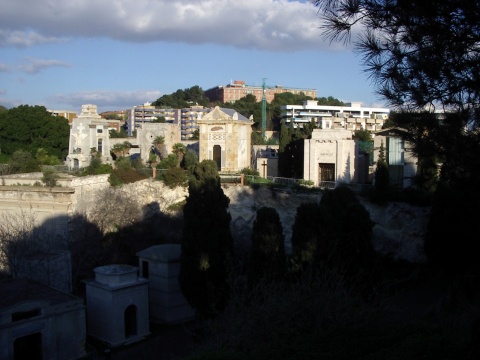
The Monumental Cemetery of Bonaria is located close to the hill of the same name, on an area formerly used as a necropolis already during the Punic-Roman and early Christian ages of the city .
Near the main entrance of the cemetery, until the beginning of the 20th century, there was the Benedictine church of Santa Maria de Portu (later of S.Bardilio) built in the eleventh century, with following transformations. The Cemetery of Bonaria was designed by Captain Luigi Damiano, divided in four regular squares, and inaugurated on the 1st of January 1829.
In the earliest times in Cagliari there was the habit to bury in churches or in areas immediately adjacent , often with significant hygienic problems .
Already during the cholera epidemic of 1816 it was necessary to find some emergency areas adjacent to the city for use as a burial place , so the need for a large town cemetery was particularly felt . Just thirty years after its inauguration, the cemetery was already inadequate, consequently it was commissioned to the architect Gaetano Cima the design of a first extension , which was followed by others that brought the area to reach the top of the hill. A special area was set for non-Catholics , British, French, German Protestants and Anglicans .
Today the cemetery of Bonaria is a large outdoor art gallery that collects sculptures by artists from Sardinia and from all over the Country operating in Cagliari ( Fadda , Sartorio , Sarrocchi Galavoni ) from the second half of the nineteenth century to the first decades of the twentieth century . In this unique art gallery it is possible to admire a peculiar variety of styles, from neoclassicism to realism , symbolism and art nouveau . This so varied artistic production reflects the taste of the city of the late nineteenth century , culturally vibrant and economically active for the presence of businessmen from the north of Italy and from abroad.
Cimitero Monumentale di Bonaria
Viale Bonaria
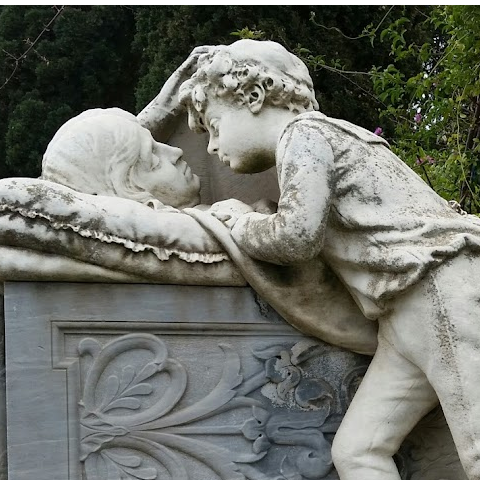
Your review will be visible after approval by the editors
To post a review you must be an authenticated user.
Log in with Social Login
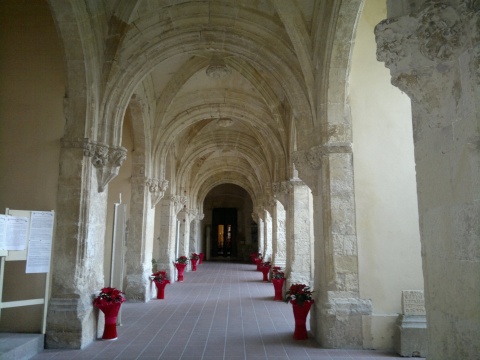
The Dominicans arrived in Cagliari in 1254 and they formed a community in the Villanova district: here they built a convent church at the same point where there was originally an ancient Benedictine church dedicated to Sant'Anna, later incorporated into the cloister.
First dedicated to Sant'Anna, the structure was later named "Convento of Castel di Castro".
During the Aragonese domination the building was rebuilt in Gothic-Catalan style, at the expense of the rulers of Aragon, and the King of Spain Charles V granted him the title of Royal Convent.
In 1943, following the bombing of the city, the structure was almost completely destroyed.
Chiostro di San Domenico
Piazza San Domenico, 4

Your review will be visible after approval by the editors
To post a review you must be an authenticated user.
Log in with Social Login
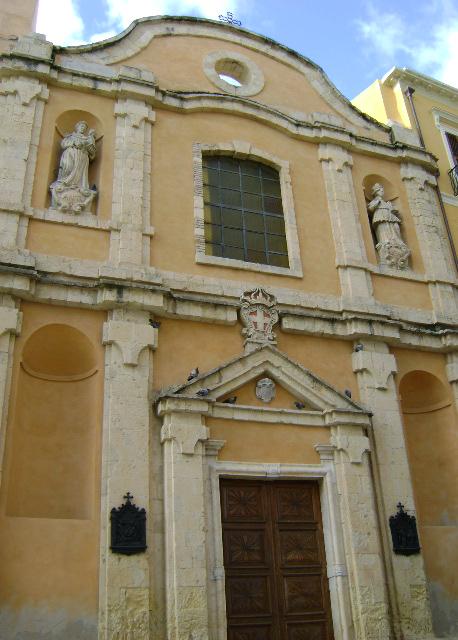
The church was built in the fifteenth century as a small oratory, due to a vow made in Santa Rosalia by the city authorities on the occasion of the recurring plagues. Located in the upper part of the Marina district, near Piazza Costituzione, it has a facade inspired by the lines of the Piedmontese baroque with frames, gables and pilasters arranged on two orders. Elegant niches in the upper part of the facade host the statues of the Franciscan saints Bonaventura and Antonio da Padova. The interior of the church has a single barrel vaulted nave, an octagonal dome on the presbytery and four chapels on each side. In the second chapel on the right from the entrance, the relics of San Salvatore da Horta from 1844 to 1931 have been preserved, then placed in the main altar, renovated for the occasion by the sculptor Andrea Usai. For this reason the church is also known with the name of San Salvatore, one of the most dear saints and venerated by the Sardinians.
Chiesa di Santa Rosalia
Via Torino
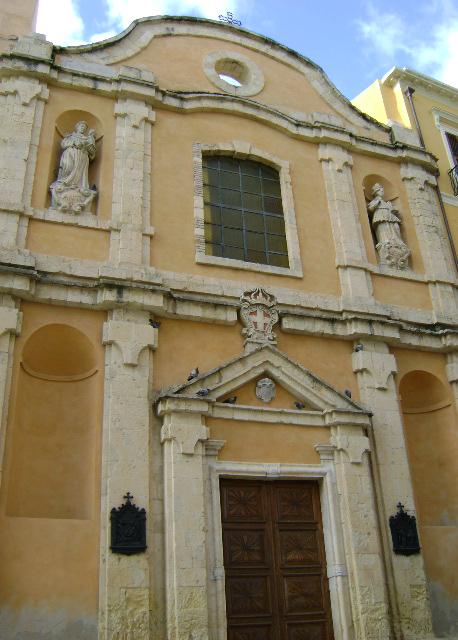
Your review will be visible after approval by the editors
To post a review you must be an authenticated user.
Log in with Social Login
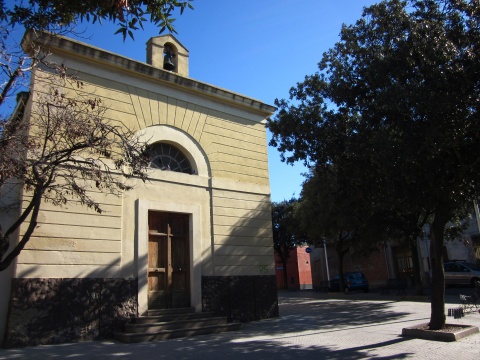
The Church of Santa Rosalia is located in the municipality of Pirri, in a small square that connects via Riva Villasanta with via Santa Maria Chiara. Its construction dates back to 1756 and is due to the Reverend Gerolamo Simoni who improved the building with the construction of some side chapels. In 1911 the monument became a hospital during the cholera epidemic and was reopened to the public in 1983. The single-nave interior hosts an ancient statue of the saint while the external facade has a simple portal surmounted by a lunette and a bell tower sailing.
Chiesa di Santa Rosalia
Via Santa Rosalia - Pirri

Your review will be visible after approval by the editors
To post a review you must be an authenticated user.
Log in with Social Login
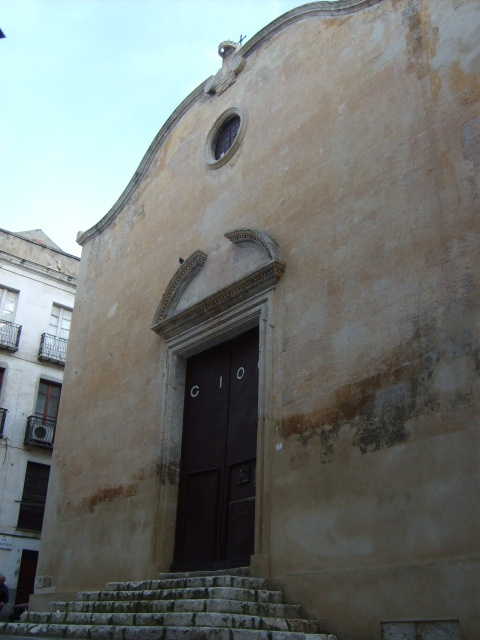
The Church of Saint Restituta is located along via Sant'Efisio and overlooks a small square in the Stampace district. Its construction probably dates back to the 17th century and was built on top of the homonymous crypt, which has been used since ancient times. Damaged by the bombings of 1943 and restored, the facade today has a double inflected terminal typical of the Baroque style and a portal surmounted by a broken curved tympanum. The interior has a single nave, barrel vaulted and decorated with three chapels on each side.
Chiesa di Santa Restituta
Via Sant'Efisio, 14

Your review will be visible after approval by the editors
To post a review you must be an authenticated user.
Log in with Social Login
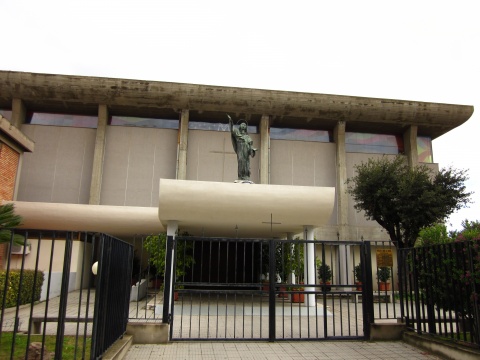
The Church of Santa Maria del Suffragio overlooks Via Flavio Gioia, in the Cep district, built since the mid-sixties in the area beyond Piazza Giovanni XXIII and bordering on Pirri. It has a modern structure in reinforced concrete, punctuated by pillars that frame the windows made of polychrome glass. The entrance is characterized by a large paved space and a covered porch. Inside, the single nave, rectangular in shape, is embellished with a coffered roof.
Chiesa di Santa Maria del Suffragio
Via Flavio Gioia, 50

Your review will be visible after approval by the editors
To post a review you must be an authenticated user.
Log in with Social Login
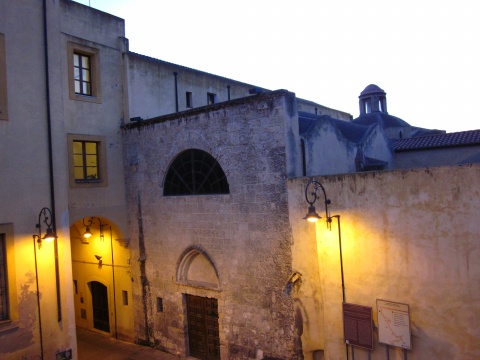
The small church is located in Castello district, in the old Jewish quarter. It is a fine example of Catalan Gothic style. The facade has a terminal plate, on which there is a semicircular window, and a portal surmounted by a Gothic arch. The interior consists in a single nave, two spans, a side chapel on the right, the presbytery and the choir. There is a simple ceiling vault on the first two spans and a starry one on the chancel.
The church originally belonged to the Confraternity of the Sacred Mount of Mercy, dedicated to the assistance of the condemned; after the suppression of the order in 1866, it was used with different aims: second headquarter for the Court of Assizes, municipal music school, gym, dormitory and refectory of the small house of Providence.
After many renovation works, the church was re-opened around 2000 and entrusted to the Sovereign Order of Malta, which in turn makes the building accessible, offering explanations about its history and the works of art that it contains.
Chiesa di Santa Maria del Monte
Via Corte D'Appello - Via Santa Croce

Your review will be visible after approval by the editors
To post a review you must be an authenticated user.
Log in with Social Login
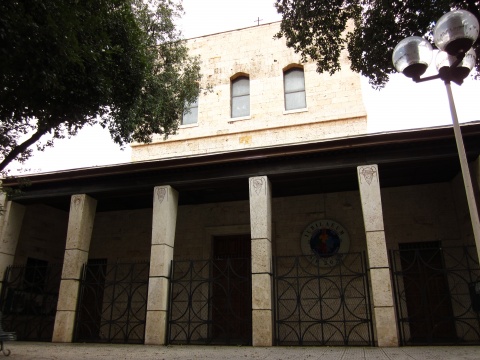
The Church of Saint Lucia, dedicated to the Christian martyr of Sicilian origin, stands in via Fais and its construction dates back to recent times. The structure has a modern plant, made using stone. The internal hall, quadrangular in shape, is divided into three naves with a trussed roof. Externally the entrance is preceded by a large porch supported by massive reinforced concrete pillars. In the upper part there are a series of small windows.
Chiesa di Santa Lucia
Via Fais, 19

Your review will be visible after approval by the editors
To post a review you must be an authenticated user.
Log in with Social Login